
Learn to Create WordPress Themes by Building 5 Projects
¥63.21
This book will help you take your first steps in the WordPress theme development process, with 5 different projects centered around creating unique and responsive WordPress themes About This Book ? Learn the basics of WordPress theme development in a step by step manner ? Make your themes more dynamic by integrating components of Bootstrap and JQuery ? 5 carefully-selected projects to help you get beyond the theory and create highly marketable WordPress themes from scratch Who This Book Is For If you are a blogger or a WordPress user who wants to learn how to create attractive, eye-catching WordPress themes, this book is for you. A basic understanding of HTML5, CSS, PHP, and some creativity is all you need to get started with this book. What You Will Learn ? Simple and advanced themes – covers basic syntax and files along with archives and search pages ? Photo Gallery – add simple animation and use the W3.CSS framework to design a photo gallery theme ? Wordstrap – incorporate Twitter Bootstrap into the theme and use the WP_NavWalker class ? E-commerce theme – build an e-commerce theme using the Foundation framework In Detail WordPress has emerged as a powerful, easy-to-use tool to design attractive, engaging websites. Themes play a big role in making WordPress as popular as it is today, and having an eye-catching, fully-functional theme could separate your website from the rest! This book will help you take your first steps in the WordPress theme development process, with 5 different projects centered around creating unique and responsive WordPress themes. Start with creating a simple WordPress theme using HTML5, CSS, and PHP. Then, you will move on to incorporate different APIs, widgets, and tools such as Bootstrap and jQuery to create more dynamic and highly-functional themes. Whether you want to create a photo gallery theme, a highly customizable e-commerce theme, or a theme designed to suit a particular business, this book will teach you everything you need to know. By the end of this highly interactive book, you will have the required mastery to develop WordPress themes from scratch. Style and approach This book takes a projects-based approach, where every project incrementally builds on your programming skills required to create different kinds of WordPress themes. With the difficulty of the projects ranging from basic to complex, this book will help you get beyond the theory and put your understanding of WordPress theme development to practical use.
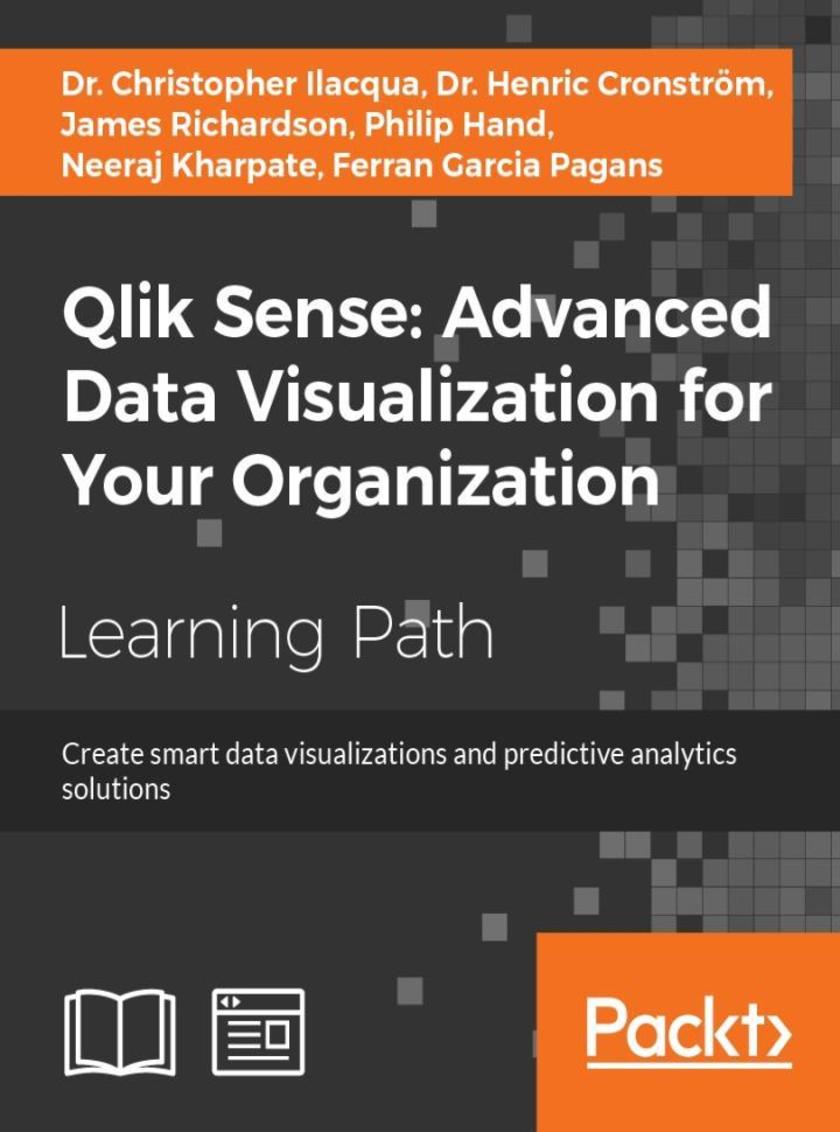
Qlik Sense: Advanced Data Visualization for Your Organization
¥179.84
Perform Interactive Data Analysis with Smarter Visualizations and Support your Enterprise-wide Analytical Needs About This Book ? Get a practical demonstration of discovering data for sales, human resources, and more using Qlik Sense ? Create dynamic dashboards for business intelligence and predictive analytics ? Create and collaborate comprehensive analytical solutions using Rattle and Qlik Sense Who This Book Is For This course is for anyone who wishes to understand and utilize the various new approaches to business intelligence actively in their business practice. Knowing the basics of business intelligence concepts would be helpful when picking up this course, but is not mandatory. What You Will Learn ? Build simple visualization models with Rattle and Qlik Sense Desktop ? Get to grips with the life cycle and new visualization functions of a Qlik Sense application ? Discover simple ways to examine data and get it ready for analysis ? Visualize your data with Qlik Sense's engaging and informative graphs ? Build efficient and responsive Associative Models ? Optimize Qlik Sense for sales, human resources, and demographic data discovery ? Explore various tips and tricks of navigation for the Qlik Sense? front end ? Develop creative extensions for your Qlik Sense? dashboard In Detail Qlik Sense is powerful and creative visual analytics software that allows users to discover data, explore it, and dig out meaningful insights in order to make a profit and make decisions for your business. This course begins by introducing you to the features and functions of the most modern edition of Qlik Sense so you get to grips with the application. The course will teach you how to administer the data architecture in Qlik Sense, enabling you to customize your own Qlik Sense application for your business intelligence needs. It also contains numerous recipes to help you overcome challenging situations while creating fully featured desktop applications in Qlik Sense. It explains how to combine Rattle and Qlik Sense Desktop to apply predictive analytics to your data to develop real-world interactive data applications. The course includes premium content from three of our most popular books: ? Learning Qlik Sense: The Official Guide Second Edition ? Qlik Sense Cookbook ? Predictive Analytics using Rattle and Qlik Sense On completion of this course, you will be self-sufficient in improving your data analysis and will know how to apply predictive analytics to your datasets. Through this course, you will be able to create predictive models and data applications, allowing you to explore your data insights much deeper. Style and approach The course will follow a practical approach with rich set of examples through which it will demonstrate its concepts, features and its implementation. The course will also feature numerous solutions which will cover entire spectrum of BI use cases.
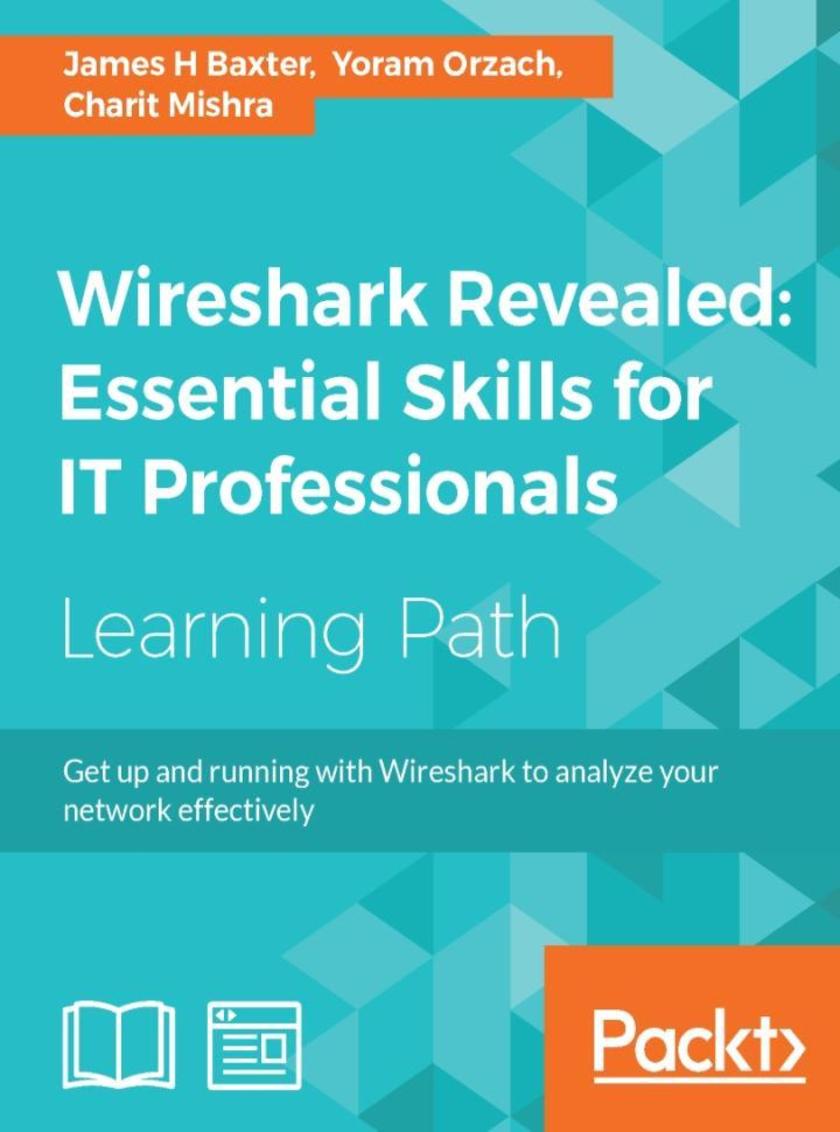
Wireshark Revealed: Essential Skills for IT Professionals
¥179.84
Master Wireshark and discover how to analyze network packets and protocols effectively, along with engaging recipes to troubleshoot network problems About This Book ? Gain valuable insights into the network and application protocols, and the key fields in each protocol ? Use Wireshark’s powerful statistical tools to analyze your network and leverage its expert system to pinpoint network problems ? Master Wireshark and train it as your network sniffer Who This Book Is For This book is aimed at IT professionals who want to develop or enhance their packet analysis skills. A basic familiarity with common network and application services terms and technologies is assumed. What You Will Learn ? Discover how packet analysts view networks and the role of protocols at the packet level ? Capture and isolate all the right packets to perform a thorough analysis using Wireshark’s extensive capture and display filtering capabilities ? Decrypt encrypted wireless traffic ? Use Wireshark as a diagnostic tool and also for network security analysis to keep track of malware ? Find and resolve problems due to bandwidth, throughput, and packet loss ? Identify and locate faults in communication applications including HTTP, FTP, mail, and various other applications – Microsoft OS problems, databases, voice, and video over IP ? Identify and locate faults in detecting security failures and security breaches in the network In Detail This Learning Path starts off installing Wireshark, before gradually taking you through your first packet capture, identifying and filtering out just the packets of interest, and saving them to a new file for later analysis. You will then discover different ways to create and use capture and display filters. By halfway through the book, you'll be mastering Wireshark features, analyzing different layers of the network protocol, and looking for any anomalies.We then start Ethernet and LAN switching, through IP, and then move on to TCP/UDP with a focus on TCP performance problems. It also focuses on WLAN security. Then, we go through application behavior issues including HTTP, mail, DNS, and other common protocols. This book finishes with a look at network forensics and how to locate security problems that might harm the network.This course provides you with highly practical content explaining Metasploit from the following books: 1) Wireshark Essentials 2) Network Analysis Using Wireshark Cookbook 3) Mastering Wireshark Style and approach This step-by-step guide follows a practical approach, starting from the basic to the advanced aspects. Through a series of real-world examples, this learning path will focus on making it easy for you to become an expert at using Wireshark.
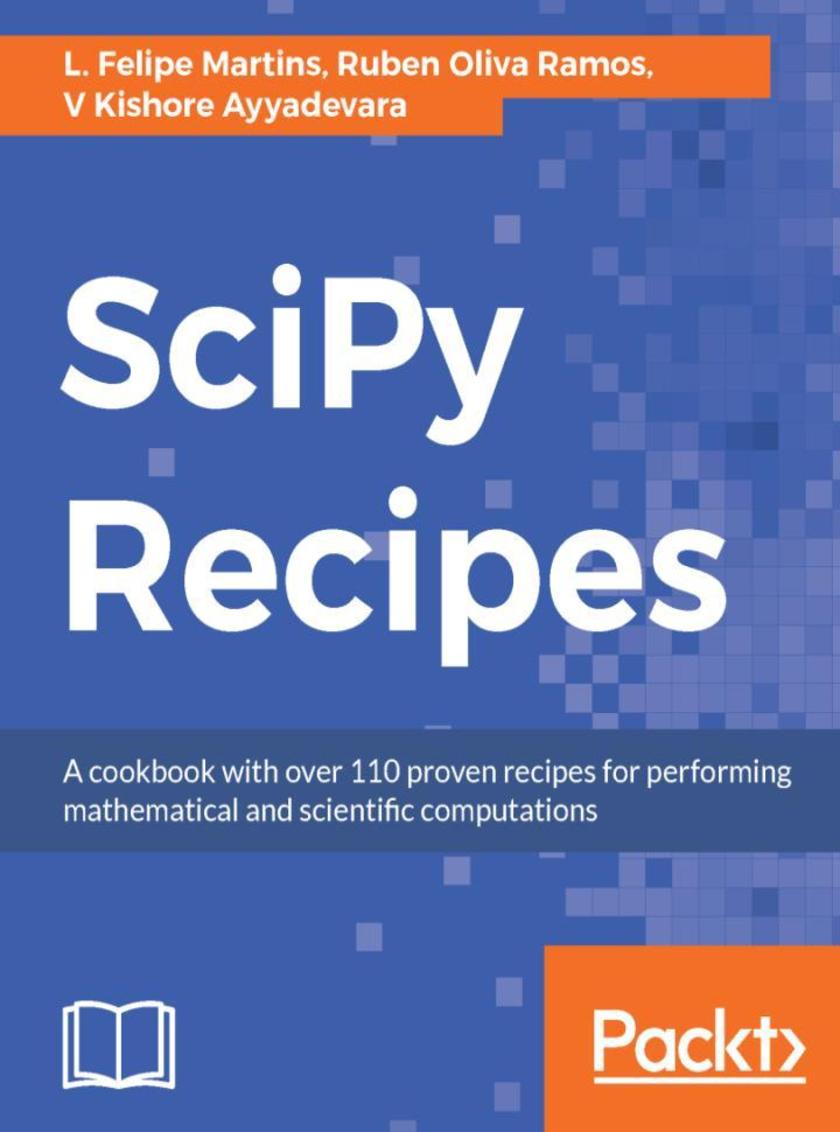
SciPy Recipes
¥63.21
Tackle the most sophisticated problems associated with scientific computing and data manipulation using SciPy About This Book ? Covers a wide range of data science tasks using SciPy, NumPy, pandas, and matplotlib ? Effective recipes on advanced scientific computations, statistics, data wrangling, data visualization, and more ? A must-have book if you're looking to solve your data-related problems using SciPy, on-the-go Who This Book Is For Python developers, aspiring data scientists, and analysts who want to get started with scientific computing using Python will find this book an indispensable resource. If you want to learn how to manipulate and visualize your data using the SciPy Stack, this book will also help you. A basic understanding of Python programming is all you need to get started. What You Will Learn ? Get a solid foundation in scientific computing using Python ? Master common tasks related to SciPy and associated libraries such as NumPy, pandas, and matplotlib ? Perform mathematical operations such as linear algebra and work with the statistical and probability functions in SciPy ? Master advanced computing such as Discrete Fourier Transform and K-means with the SciPy Stack ? Implement data wrangling tasks efficiently using pandas ? Visualize your data through various graphs and charts using matplotlib In Detail With the SciPy Stack, you get the power to effectively process, manipulate, and visualize your data using the popular Python language. Utilizing SciPy correctly can sometimes be a very tricky proposition. This book provides the right techniques so you can use SciPy to perform different data science tasks with ease. This book includes hands-on recipes for using the different components of the SciPy Stack such as NumPy, SciPy, matplotlib, and pandas, among others. You will use these libraries to solve real-world problems in linear algebra, numerical analysis, data visualization, and much more. The recipes included in the book will ensure you get a practical understanding not only of how a particular feature in SciPy Stack works, but also of its application to real-world problems. The independent nature of the recipes also ensure that you can pick up any one and learn about a particular feature of SciPy without reading through the other recipes, thus making the book a very handy and useful guide. Style and approach This book consists of hands-on recipes where you’ll deal with real-world problems. You’ll execute a series of tasks as you walk through scientific computing challenges using SciPy. Your one-stop solution for common and not-so-common pain points, this is a book that you must have on the shelf.
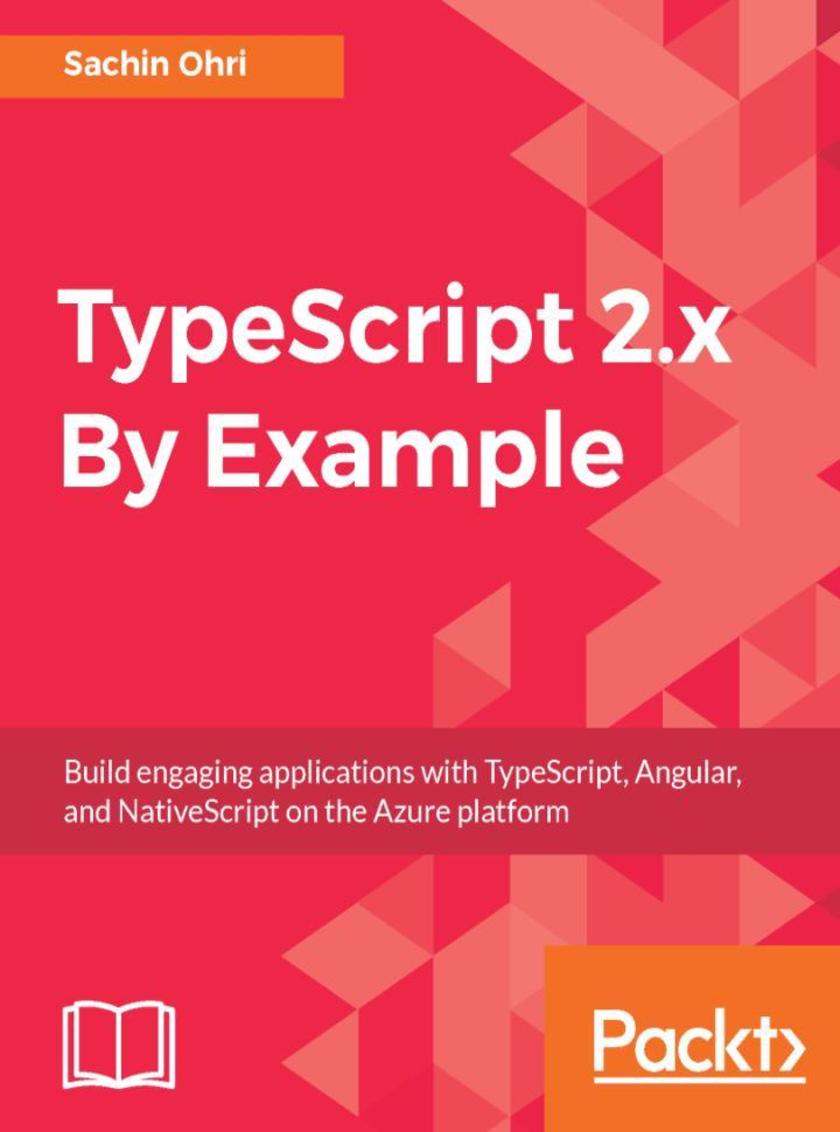
TypeScript 2.x By Example
¥80.65
Leverage the power of Type* 2.0 using real-world examples About This Book ? Begin with the fundamentals of TypeScript and learn how to write better JavaScript code ? Build three amazing applications throughout the book ? Leverage the power of tools such as Angular 2 and NativeScript to build for the web as well as for mobile Who This Book Is For Web developers who would like to learn how to use TypeScript to build amazing applications will benefit from this book. What You Will Learn ? Design your first project in Visual Studio ? Learn about the different data types in TypeScript ? Create web applications in an object-oriented fashion using TypeScript ? Build a Trello application using TypeScript's complex features. ? Explore the tools available in a web application ecosystem to write unit test cases ? Deploy web applications to cloud and assign resources to the application In Detail The TypeScript language, compiler, and open source development toolset brings JavaScript development up to the enterprise level. It allows you to use ES5, ES6, and ES7 JavaScript language features today, including classes, interfaces, generics, modules, and more. Its simple typing syntax enables building large, robust applications using object-oriented techniques and industry-standard design principles. This book aims at teaching you how to get up and running with TypeScript development in the most practical way possible. Taking you through two exciting projects built from scratch, you will learn the basics of TypeScript, before progressing to functions, generics, promises, and callbacks. Then, you’ll get to implement object-oriented programming as well as optimize your applications with effective memory management. You’ll also learn to test and secure your applications, before deploying them. Starting with a basic SPA built using Angular, you will progress on to building, maybe, a Chat application or a cool application. You’ll also learn how to use NativeScript to build a cool mobile application. Each of these applications with be explained in detail, allowing you to grasp the concepts fast. By the end of this book, you will have not only built two amazing projects but you will also have the skills necessary to take your development to the next level. Style and approach Example-based approach to get you quickly started with Type*
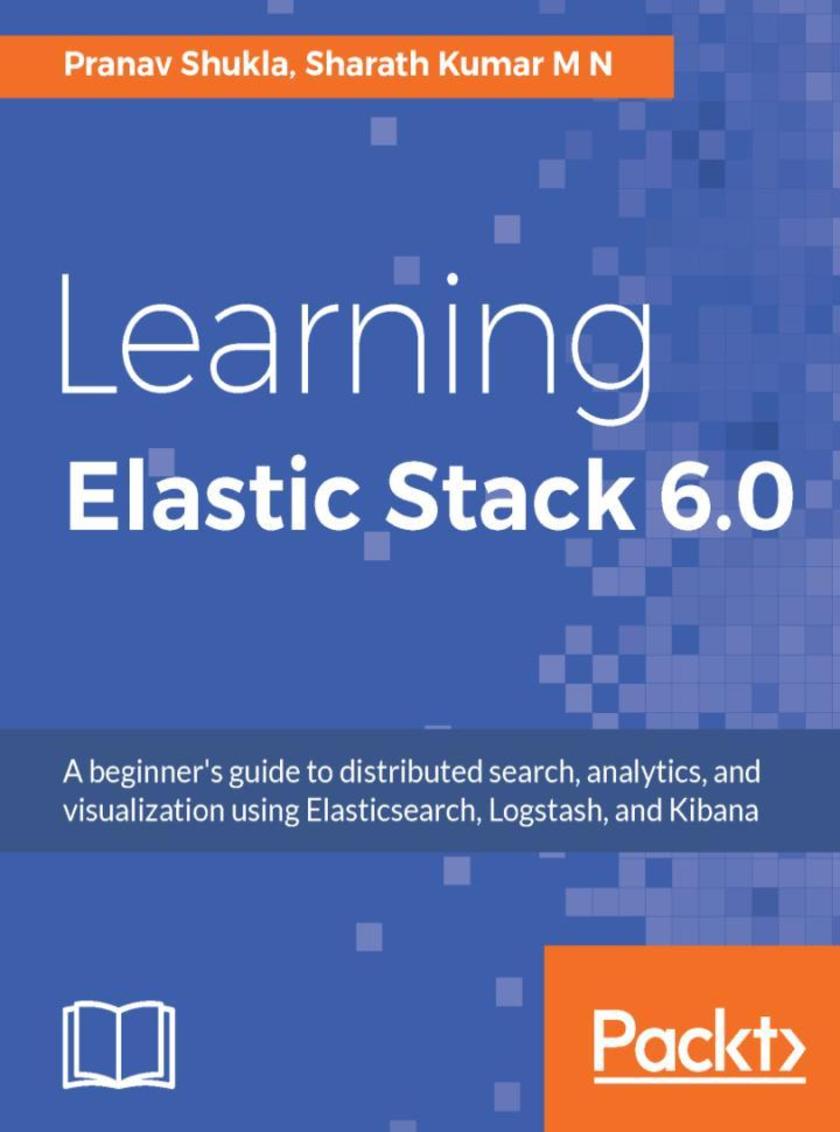
Learning Elastic Stack 6.0
¥63.21
Deliver end-to-end real-time distributed data processing solutions by leveraging the power of Elastic Stack 6.0 About This Book ? Get to grips with the new features introduced in Elastic Stack 6.0 ? Get valuable insights from your data by working with the different components of the Elastic stack such as Elasticsearch, Logstash, Kibana, X-Pack, and Beats ? Includes handy tips and techniques to build, deploy and manage your Elastic applications efficiently on-premise or on the cloud Who This Book Is For This book is for data professionals who want to get amazing insights and business metrics from their data sources. If you want to get a fundamental understanding of the Elastic Stack for distributed, real-time processing of data, this book will help you. A fundamental knowledge of JSON would be useful, but is not mandatory. No previous experience with the Elastic Stack is required. What You Will Learn ? Familiarize yourself with the different components of the Elastic Stack ? Get to know the new functionalities introduced in Elastic Stack 6.0 ? Effectively build your data pipeline to get data from terabytes or petabytes of data into Elasticsearch and Logstash for searching and logging ? Use Kibana to visualize data and tell data stories in real-time ? Secure, monitor, and use the alerting and reporting capabilities of Elastic Stack ? Take your Elastic application to an on-premise or cloud-based production environment In Detail The Elastic Stack is a powerful combination of tools for distributed search, analytics, logging, and visualization of data from medium to massive data sets. The newly released Elastic Stack 6.0 brings new features and capabilities that empower users to find unique, actionable insights through these techniques. This book will give you a fundamental understanding of what the stack is all about, and how to use it efficiently to build powerful real-time data processing applications. After a quick overview of the newly introduced features in Elastic Stack 6.0, you’ll learn how to set up the stack by installing the tools, and see their basic configurations. Then it shows you how to use Elasticsearch for distributed searching and analytics, along with Logstash for logging, and Kibana for data visualization. It also demonstrates the creation of custom plugins using Kibana and Beats. You’ll find out about Elastic X-Pack, a useful extension for effective security and monitoring. We also provide useful tips on how to use the Elastic Cloud and deploy the Elastic Stack in production environments. On completing this book, you’ll have a solid foundational knowledge of the basic Elastic Stack functionalities. You’ll also have a good understanding of the role of each component in the stack to solve different data processing problems. Style and approach This step-by-step guide will show you the Elastic Stack, covering all the components through interactive and easy-to-follow examples. It also includes handy tips.
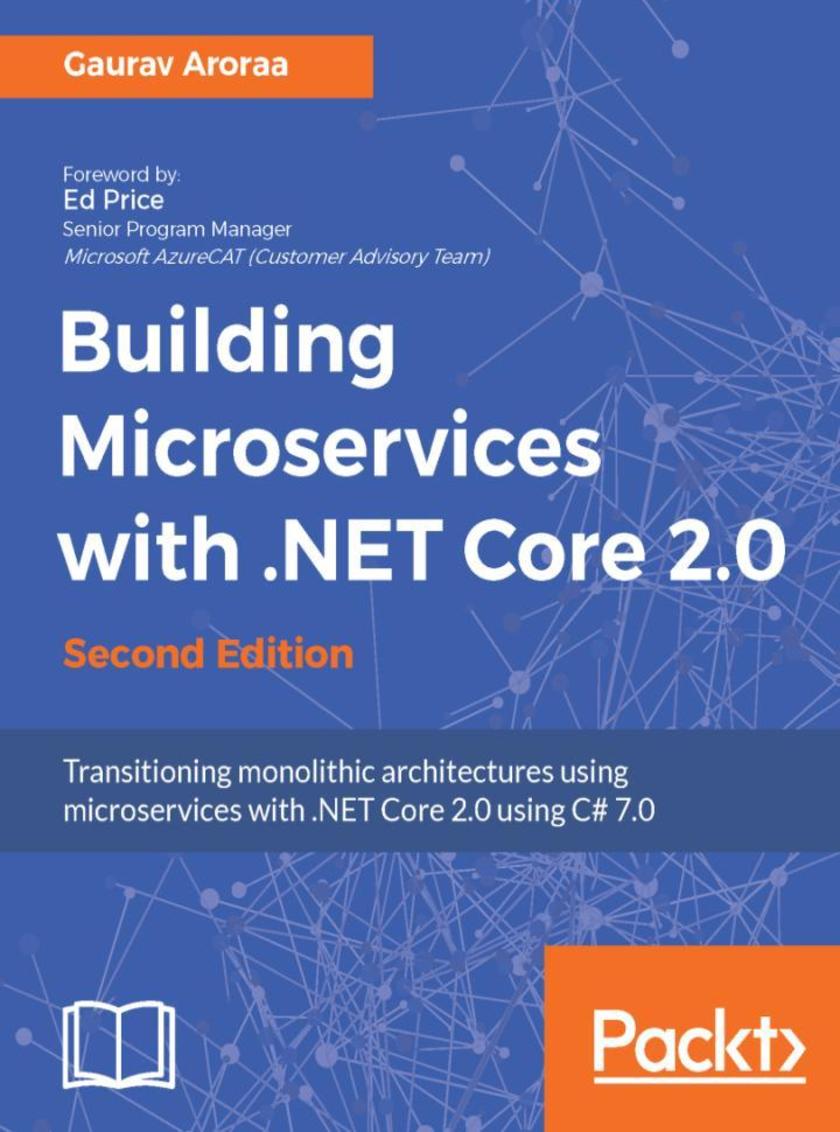
Building Microservices with .NET Core 2.0 - Second Edition
¥80.65
Architect your .NET applications by breaking them into really small pieces - microservices -using this practical, example-based guide. About This Book ? Start your microservices journey and get a broader perspective on microservices development using C# 7.0 with .NET Core 2.0 ? Build, deploy, and test microservices using ASP.Net Core, ASP.NET Core API, and Microsoft Azure Cloud ? Get the basics of reactive microservices Who This Book Is For This book is for .NET Core developers who want to learn and understand the microservices architecture and implement it in their .NET Core applications. It’s ideal for developers who are completely new to microservices or just have a theoretical understanding of this architectural approach and want to gain a practical perspective in order to better manage application complexities. What You Will Learn ? Get acquainted with Microsoft Azure Service Fabric ? Compare microservices with monolithic applications and SOA ? Learn Docker and Azure API management ? Define a service interface and implement APIs using ASP.NET Core 2.0 ? Integrate services using a synchronous approach via RESTful APIs with ASP.NET Core 2.0 ? Implement microservices security using Azure Active Directory, OpenID Connect, and OAuth 2.0 ? Understand the operation and scaling of microservices in .NET Core 2.0 ? Understand the key features of reactive microservices and implement them using reactive extensions In Detail The microservices architectural style promotes the development of complex applications as a suite of small services based on business capabilities. This book will help you identify the appropriate service boundaries within your business. We'll start by looking at what microservices are and their main characteristics. Moving forward, you will be introduced to real-life application scenarios; after assessing the current issues, we will begin the journey of transforming this application by splitting it into a suite of microservices using C# 7.0 with .NET Core 2.0. You will identify service boundaries, split the application into multiple microservices, and define service contracts. You will find out how to configure, deploy, and monitor microservices, and configure scaling to allow the application to quickly adapt to increased demand in the future. With an introduction to reactive microservices, you’ll strategically gain further value to keep your code base simple, focusing on what is more important rather than on messy asynchronous calls. Style and approach This guide serves as a stepping stone that helps .NET Core developers in their microservices architecture. This book provides just enough theory to understand the concepts and apply the examples.
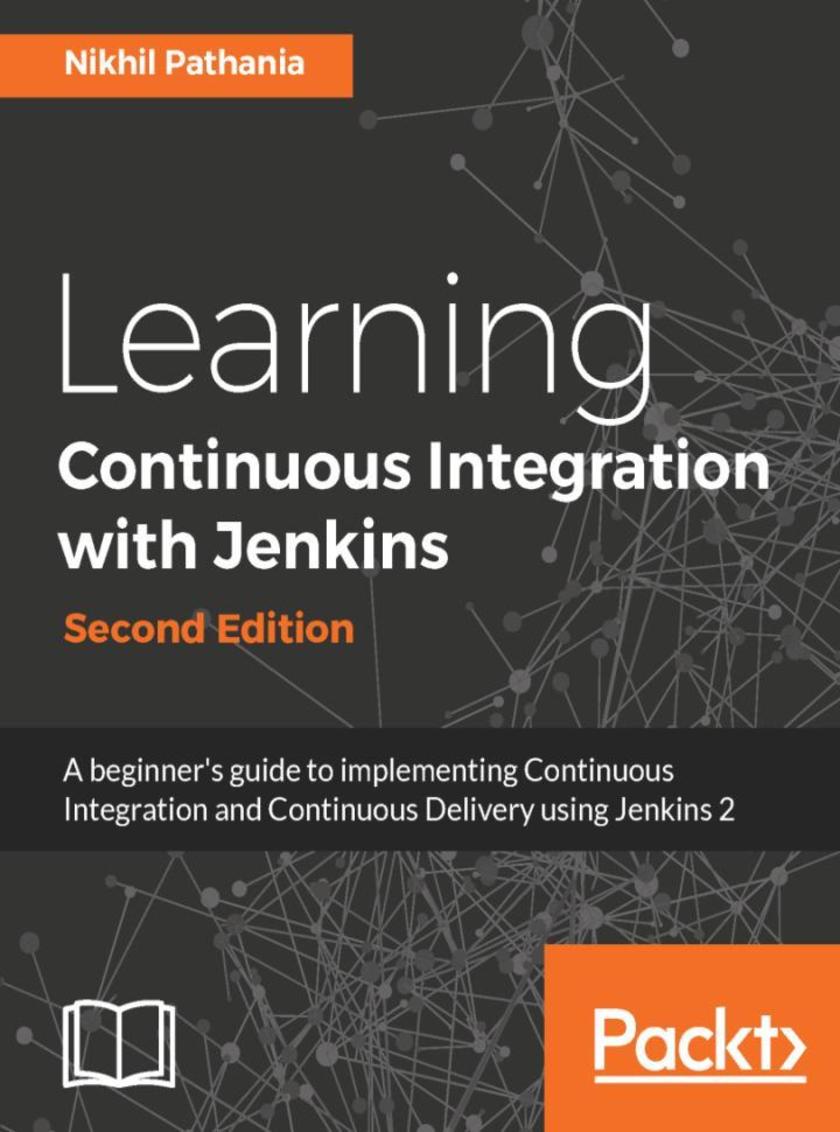
Learning Continuous Integration with Jenkins - Second Edition
¥80.65
Speed up the software delivery process and software productivity using the latest features of Jenkins About This Book ? Take advantage of a Continuous Integration and Continuous Delivery solution to speed up productivity and achieve faster software delivery ? See all the new features introduced in Jenkins 2.x, such as Pipeline as code, Multibranch pipeline, Docker Plugin, and more ? Learn to implement Continuous Integration and Continuous Delivery by orchestrating multiple DevOps tools using Jenkins Who This Book Is For The book is for those with little or no previous experience with Agile or CI and CD. It’s a good starting point for anyone new to this field who wants to leverage the benefits of CI and CD to increase productivity and reduce delivery time. It’s ideal for Build and Release engineers, DevOps engineers, SCM (Software Configuration Management) engineers, developers, testers, and project managers. If you’re already using Jenkins for CI, you can take your project to the next level—CD. What You Will Learn ? Get to know some of the most popular ways to set up Jenkins ? See all the new features introduced in the latest Jenkins, such as pipeline as code, Multibranch pipeline, and more ? Manage users, projects, and permissions in Jenkins to ensure better security ? Leverage the power of plugins in Jenkins ? Learn how to create a CI pipeline using Jenkins Blue Ocean ? Create a distributed build farm using Docker and use it with Jenkins ? Implement CI and CD using Jenkins ? See the difference between CD and Continuous Deployment ? Understand the concepts of CI In Detail In past few years, agile software development has seen tremendous growth. There is a huge demand for software delivery solutions that are fast yet flexible to numerous amendments. As a result, Continuous Integration (CI) and Continuous Delivery (CD) methodologies are gaining popularity. This book starts off by explaining the concepts of CI and its significance in the Agile. Next, you'll learn how to configure and set up Jenkins in many different ways. The book exploits the concept of "pipeline as code" and various other features introduced in the Jenkins 2.x release to their full potential. We also talk in detail about the new Jenkins Blue Ocean interface and the features that help to quickly and easily create a CI pipeline. Then we dive into the various features offered by Jenkins one by one, exploiting them for CI and CD. Jenkins' core functionality and flexibility allows it to fit in a variety of environments and can help streamline the development process for all stakeholders. Next, you'll be introduced to CD and will learn how to achieve it using Jenkins. Through this book's wealth of best practices and real-world tips, you'll discover how easy it is to implement CI and CD using Jenkins. Style and approach The book uses a simple Maven project to demonstrate the implementation of CI and CD using Jenkins. This step-by-step guide shows you how to implement CI/CD and can be used as a template to perform CI/CD in your projects.

Containers in OpenStack
¥63.21
A practical book which will help the readers understand how the container ecosystem and OpenStack work together. About This Book ? Gets you acquainted with containerization in private cloud ? Learn to effectively manage and secure your containers in OpenStack ? Practical use cases on container deployment and management using OpenStack components Who This Book Is For This book is targeted towards cloud engineers, system administrators, or anyone from the production team who works on OpenStack cloud. This book act as an end to end guide for anyone who wants to start using the concept of containerization on private cloud. Some basic knowledge of Docker and Kubernetes will help. What You Will Learn ? Understand the role of containers in the OpenStack ecosystem ? Learn about containers and different types of container runtimes tools. ? Understand containerization in OpenStack with respect to the deployment framework, platform services, application deployment, and security ? Get skilled in using OpenStack to run your applications inside containers ? Explore the best practices of using containers in OpenStack. In Detail Containers are one of the most talked about technologies of recent times. They have become increasingly popular as they are changing the way we develop, deploy, and run software applications. OpenStack gets tremendous traction as it is used by many organizations across the globe and as containers gain in popularity and become complex, it’s necessary for OpenStack to provide various infrastructure resources for containers, such as compute, network, and storage. Containers in OpenStack answers the question, how can OpenStack keep ahead of the increasing challenges of container technology? You will start by getting familiar with container and OpenStack basics, so that you understand how the container ecosystem and OpenStack work together. To understand networking, managing application services and deployment tools, the book has dedicated chapters for different OpenStack projects: Magnum, Zun, Kuryr, Murano, and Kolla. Towards the end, you will be introduced to some best practices to secure your containers and COE on OpenStack, with an overview of using each OpenStack projects for different use cases. Style and approach An end to end guide for anyone who wants to start using the concept of containerization on private cloud.
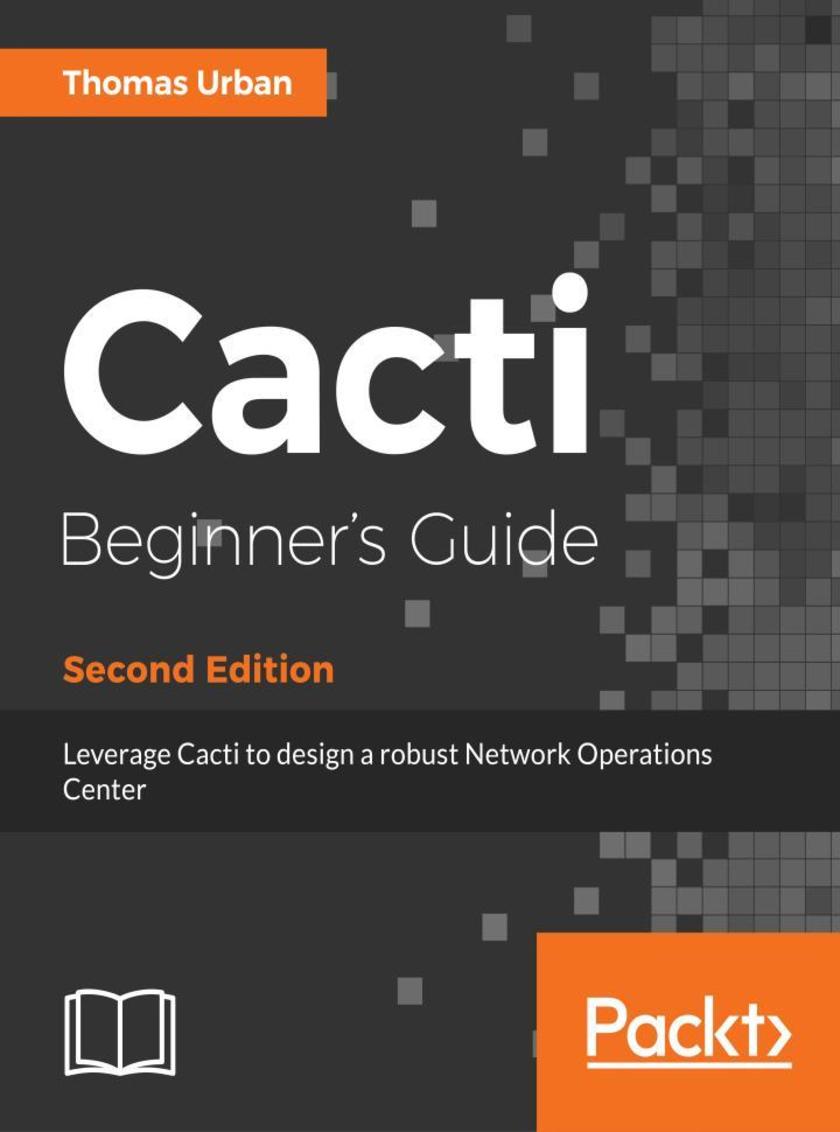
Cacti Beginner's Guide - Second Edition
¥80.65
A comprehensive guide to learning Cacti and using it to implement performance measurement and reporting within a Network Operations Center About This Book ? A complete Cacti book that focuses on the basics as well as the advanced concepts you need to know for implementing a Network Operations Center ? A step-by-step Beginner's Guide with detailed instructions on how to create and implement custom plugins ? Written by Thomas Urban – creator of the "Cereus" and "NMID" plugins for Cacti known as Phalek in the Cacti forum Who This Book Is For If you are a network operator and want to use Cacti for implementing performance measurement for trending, troubleshooting, and reporting purposes, then this book is for you. You only need to know the basics of network management and SNMP. What You Will Learn ? Setting up Cacti on Linux and Windows systems ? Extending the core functionality by using the plugin architecture ? Building your own custom plugins ? Creating your own custom data input method to retrieve data from your systems ? Using SNMP, SSH, and WMI to retrieve remote performance data ? Designing and create enterprise-class reports with the reporting plugins ? Implementing threshold-based alerting using the Thold plugin ? Automating common administrative tasks utilizing the command-line interface and the automate functionality ? Migrating Cacti to new servers ? Building a multi remote-poller environment In Detail Cacti is a performance measurement tool that provides easy methods and functions for gathering and graphing system data. You can use Cacti to develop a robust event management system that can alert on just about anything you would like it to. But to do that, you need to gain a solid understanding of the basics of Cacti, its plugin architecture, and automation concepts. Cacti Beginner's Guide will introduce you to the wide variety of features of Cacti and will guide you on how to use them for maximum effectiveness. Advanced topics such as the plugin architecture and Cacti automation using the command-line interface will help you build a professional performance measurement system. Designed as a beginner's guide, the book starts off with the basics of installing and using Cacti, and also covers the advanced topics that will show you how to customize and extend the core Cacti functionalities. The book offers essential tutorials for creating advanced graphs and using plugins to create enterprise-class reports to show your customers and colleagues. From data templates to input methods and plugin installation to creating your own customized plugins, this book provides you with a rich selection of step-by-step instructions to reach your goals. It covers all you need to know to implement professional performance measurement techniques with Cacti and ways to fully customize Cacti to fit your needs. You will also learn how to migrate Cacti to new servers. Lastly you will also be introduced to the latest feature of building a scalable remote poller environment. By the end of the book, you will be able to implement and extend Cacti to monitor, display, and report the performance of your network exactly the way you want. Style and approach Written for beginners to Cacti, this book contains step-by-step instructions and hands-on tutorials for network operators to learn how to implement and use the core Cacti functions.
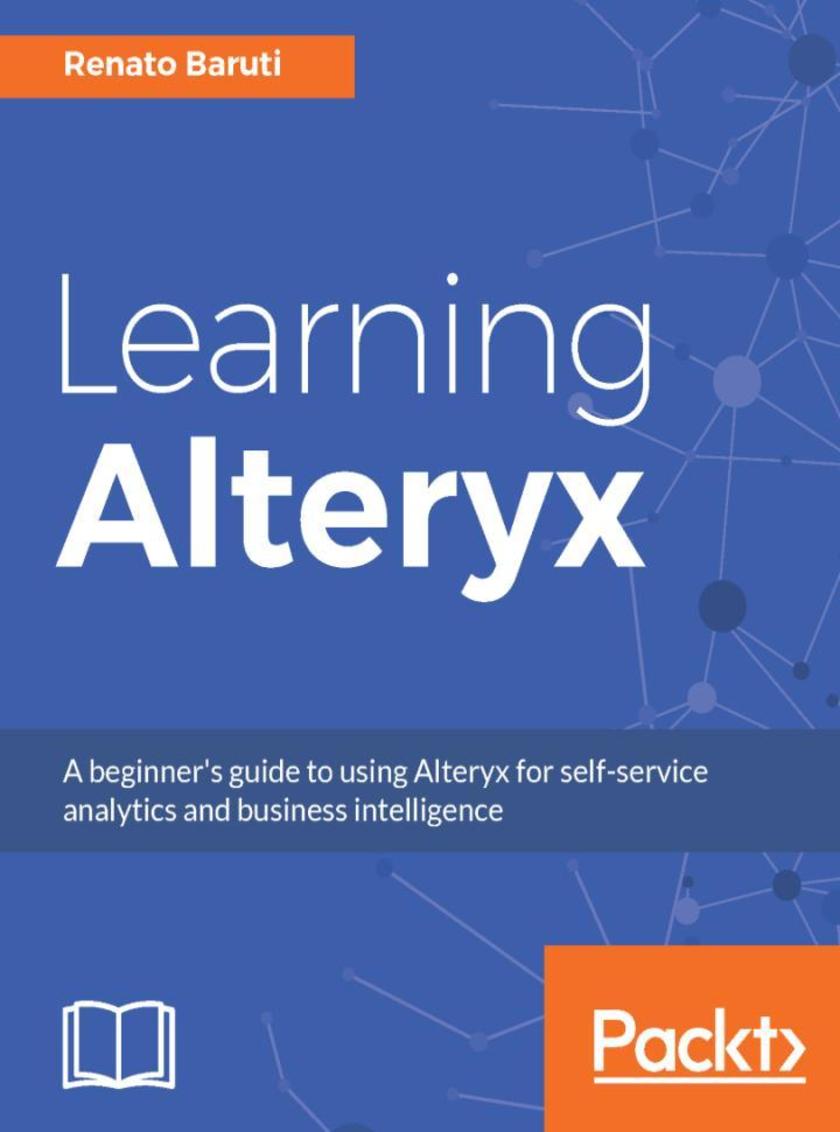
Learning Alteryx
¥80.65
Implement your Business Intelligence solutions without any coding - by leveraging the power of the Alteryx platform About This Book ? Experience the power of codeless analytics using Alteryx, a leading Business Intelligence tool ? Uncover hidden trends and valuable insights from your data across different sources and make accurate predictions ? Includes real-world examples to put your understanding of the features in Alteryx to practical use Who This Book Is For This book is for aspiring data professionals who want to learn and implement self-service analytics from scratch, without any coding. Those who have some experience with Alteryx and want to gain more proficiency will also find this book to be useful. A basic understanding of the data science concepts is all you need to get started with this book. What You Will Learn ? Create efficient workflows with Alteryx to answer complex business questions ? Learn how to speed up the cleansing, data preparing, and shaping process ? Blend and join data into a single dataset for self-service analysis ? Write advanced expressions in Alteryx leading to an optimal workflow for efficient processing of huge data ? Develop high-quality, data-driven reports to improve consistency in reporting and analysis ? Explore the flexibility of macros by automating analytic processes ? Apply predictive analytics from spatial, demographic, and behavioral analysis and quickly publish, schedule ? Share your workflows and insights with relevant stakeholders In Detail Alteryx, as a leading data blending and advanced data analytics platform, has taken self-service data analytics to the next level. Companies worldwide often find themselves struggling to prepare and blend massive datasets that are time-consuming for analysts. Alteryx solves these problems with a repeatable workflow designed to quickly clean, prepare, blend, and join your data in a seamless manner. This book will set you on a self-service data analytics journey that will help you create efficient workflows using Alteryx, without any coding involved. It will empower you and your organization to take well-informed decisions with the help of deeper business insights from the data.Starting with the fundamentals of using Alteryx such as data preparation and blending, you will delve into the more advanced concepts such as performing predictive analytics. You will also learn how to use Alteryx’s features to share the insights gained with the relevant decision makers. To ensure consistency, we will be using data from the Healthcare domain throughout this book. The knowledge you gain from this book will guide you to solve real-life problems related to Business Intelligence confidently. Whether you are a novice with Alteryx or an experienced data analyst keen to explore Alteryx’s self-service analytics features, this book will be the perfect companion for you. Style and approach Comprehensive, step by step guide filled with real-world examples to step through the complex business questions using one of the leading data analytics platform.

Enterprise Cloud Security and Governance
¥80.65
Build a resilient cloud architecture to tackle data disasters with ease About This Book ? Gain a firm grasp of Cloud data security and governance, irrespective of your Cloud platform ? Practical examples to ensure you secure your Cloud environment efficiently ? A step-by-step guide that will teach you the unique techniques and methodologies of Cloud data governance Who This Book Is For If you are a cloud security professional who wants to ensure cloud security and data governance no matter the environment, then this book is for you. A basic understanding of working on any cloud platform would be beneficial. What You Will Learn ? Configure your firewall and Network ACL ? Protect your system against DDOS and application-level attacks ? Explore cryptography and data security for your cloud ? Get to grips with configuration management tools to automate your security tasks ? Perform vulnerability scanning with the help of the standard tools in the industry ? Learn about central log management In Detail Modern day businesses and enterprises are moving to the Cloud, to improve efficiency and speed, achieve flexibility and cost effectiveness, and for on-demand Cloud services. However, enterprise Cloud security remains a major concern because migrating to the public Cloud requires transferring some control over organizational assets to the Cloud provider. There are chances these assets can be mismanaged and therefore, as a Cloud security professional, you need to be armed with techniques to help businesses minimize the risks and misuse of business data. The book starts with the basics of Cloud security and offers an understanding of various policies, governance, and compliance challenges in Cloud. This helps you build a strong foundation before you dive deep into understanding what it takes to design a secured network infrastructure and a well-architected application using various security services in the Cloud environment. Automating security tasks, such as Server Hardening with Ansible, and other automation services, such as Monit, will monitor other security daemons and take the necessary action in case these security daemons are stopped maliciously. In short, this book has everything you need to secure your Cloud environment with. It is your ticket to obtain industry-adopted best practices for developing a secure, highly available, and fault-tolerant architecture for organizations. Style and approach This book follows a step-by-step, practical approach to secure your applications and data when they are located remotely.
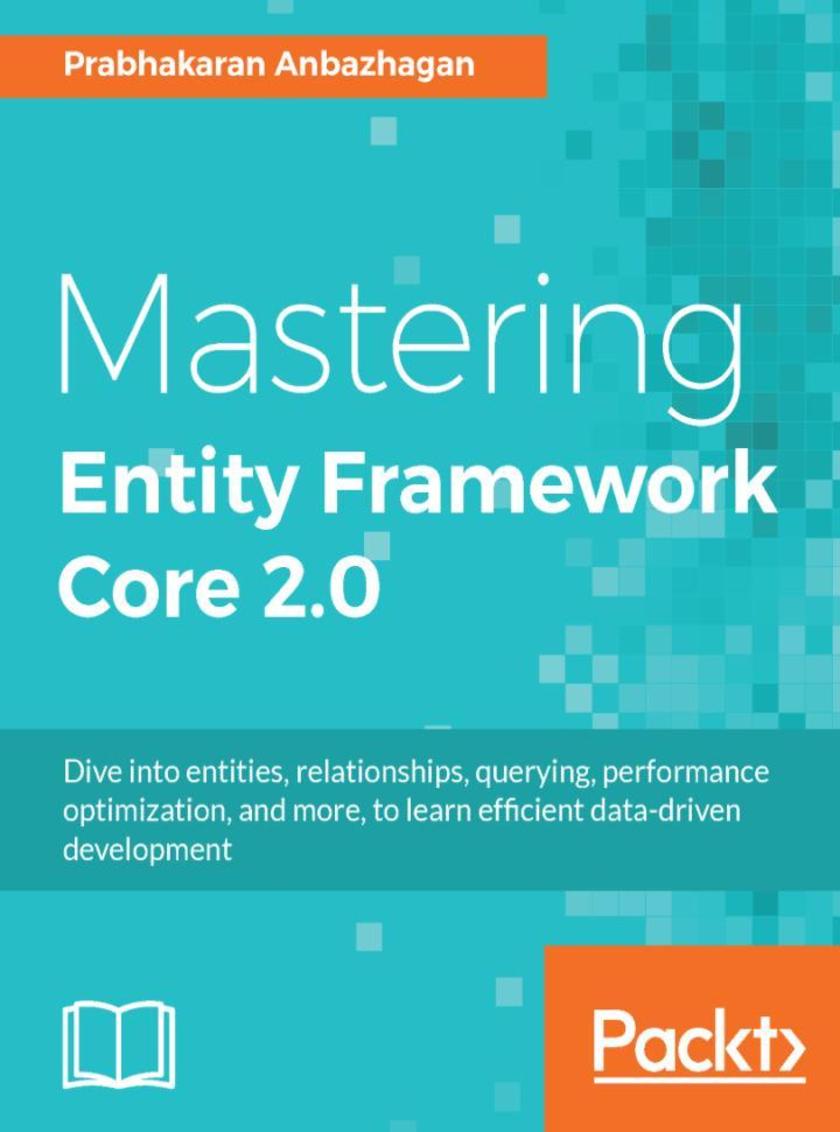
Mastering Entity Framework Core 2.0
¥90.46
Learn how to leverage the features of the new Entity Framework Core APIs and use them to build pure .NET Core applications. About This Book ? Learn how to effectively manage your database to make it more productive and maintainable. ? Write simplified queries using LINQ to acquire the desired data easily ? Raise the abstraction level from data to objects so teams can function independently, resulting in easily maintainable code Who This Book Is For This book is for .NET Core developers who would like to integrate EF Core in their application. Prior knowledge of .NET Core and C# is assumed. What You Will Learn ? Create databases and perform CRUD operations on them ? Understand and build relationships (related to entities, keys, and properties) ? Understand in-built, custom, and remote validation (both client and server side) ? You will learn to handle concurrency to build responsive applications ? You will handle transactions and multi-tenancy while also improving performance In Detail Being able to create and maintain data-oriented applications has become crucial in modern programming. This is why Microsoft came up with Entity Framework so architects can optimize storage requirements while also writing efficient and maintainable application code. This book is a comprehensive guide that will show how to utilize the power of the Entity Framework to build efficient .NET Core applications. It not only teaches all the fundamentals of Entity Framework Core but also demonstrates how to use it practically so you can implement it in your software development. The book is divided into three modules. The first module focuses on building entities and relationships. Here you will also learn about different mapping techniques, which will help you choose the one best suited to your application design. Once you have understood the fundamentals of the Entity Framework, you will move on to learn about validation and querying in the second module. It will also teach you how to execute raw SQL queries and extend the Entity Framework to leverage Query Objects using the Query Object Pattern. The final module of the book focuses on performance optimization and managing the security of your application. You will learn to implement failsafe mechanisms using concurrency tokens. The book also explores row-level security and multitenant databases in detail. By the end of the book, you will be proficient in implementing Entity Framework on your .NET Core applications. Style and approach This book is filled with various examples that will help you use Entity Framework Core 2.0 to write efficient software.
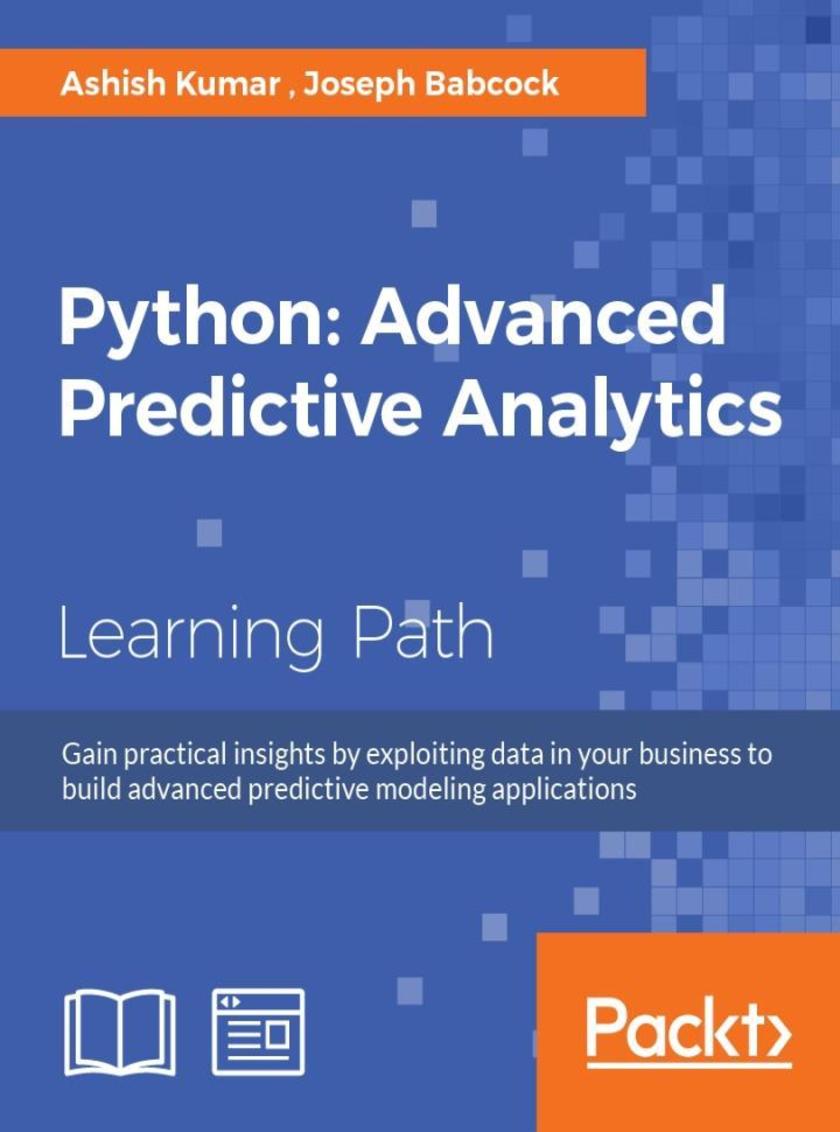
Python: Advanced Predictive Analytics
¥179.84
Gain practical insights by exploiting data in your business to build advanced predictive modeling applications About This Book ? A step-by-step guide to predictive modeling including lots of tips, tricks, and best practices ? Learn how to use popular predictive modeling algorithms such as Linear Regression, Decision Trees, Logistic Regression, and Clustering ? Master open source Python tools to build sophisticated predictive models Who This Book Is For This book is designed for business analysts, BI analysts, data scientists, or junior level data analysts who are ready to move on from a conceptual understanding of advanced analytics and become an expert in designing and building advanced analytics solutions using Python. If you are familiar with coding in Python (or some other programming/statistical/*ing language) but have never used or read about predictive analytics algorithms, this book will also help you. What You Will Learn ? Understand the statistical and mathematical concepts behind predictive analytics algorithms and implement them using Python libraries ? Get to know various methods for importing, cleaning, sub-setting, merging, joining, concatenating, exploring, grouping, and plotting data with pandas and NumPy ? Master the use of Python notebooks for exploratory data analysis and rapid prototyping ? Get to grips with applying regression, classification, clustering, and deep learning algorithms ? Discover advanced methods to analyze structured and unstructured data ? Visualize the performance of models and the insights they produce ? Ensure the robustness of your analytic applications by mastering the best practices of predictive analysis In Detail Social Media and the Internet of Things have resulted in an avalanche of data. Data is powerful but not in its raw form; it needs to be processed and modeled, and Python is one of the most robust tools out there to do so. It has an array of packages for predictive modeling and a suite of IDEs to choose from. Using the Python programming language, analysts can use these sophisticated methods to build scalable analytic applications. This book is your guide to getting started with predictive analytics using Python. You'll balance both statistical and mathematical concepts, and implement them in Python using libraries such as pandas, scikit-learn, and NumPy. Through case studies and code examples using popular open-source Python libraries, this book illustrates the complete development process for analytic applications. Covering a wide range of algorithms for classification, regression, clustering, as well as cutting-edge techniques such as deep learning, this book illustrates explains how these methods work. You will learn to choose the right approach for your problem and how to develop engaging visualizations to bring to life the insights of predictive modeling. Finally, you will learn best practices in predictive modeling, as well as the different applications of predictive modeling in the modern world. The course provides you with highly practical content from the following Packt books: 1. Learning Predictive Analytics with Python 2. Mastering Predictive Analytics with Python Style and approach This course aims to create a smooth learning path that will teach you how to effectively perform predictive analytics using Python. Through this comprehensive course, you’ll learn the basics of predictive analytics and progress to predictive modeling in the modern world.
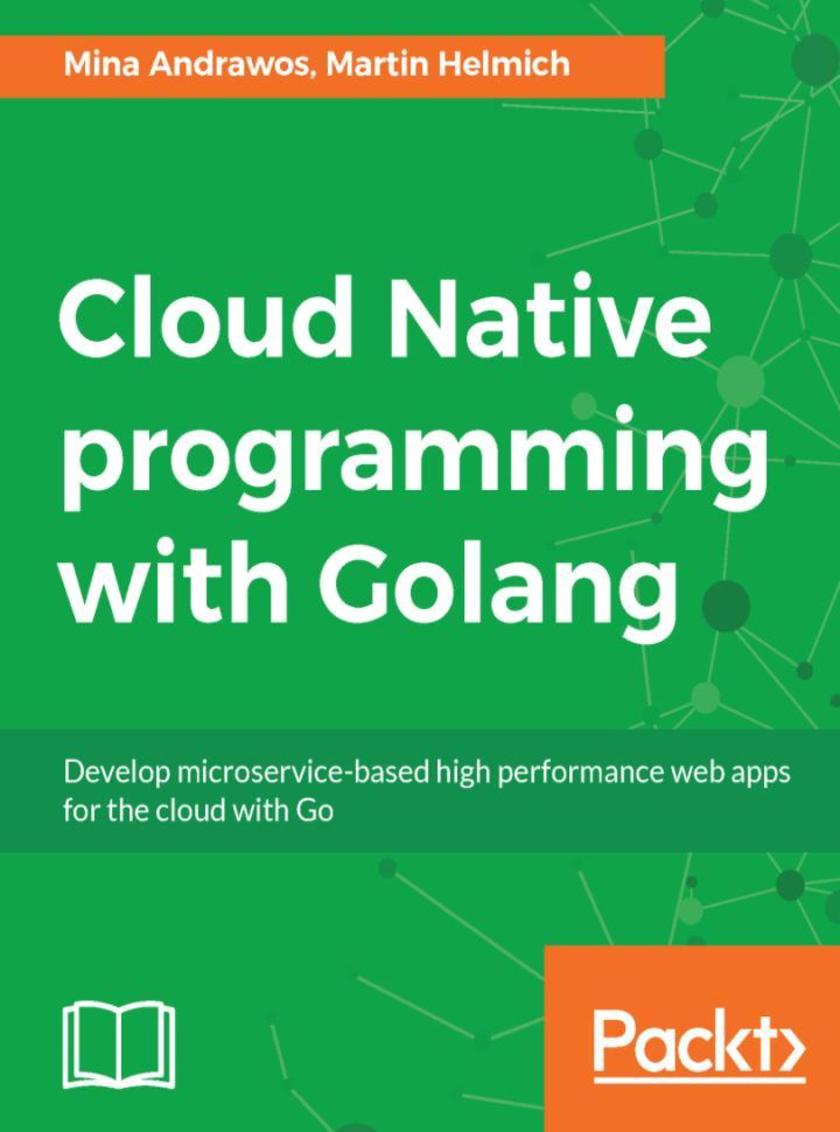
Cloud Native programming with Golang
¥80.65
Discover practical techniques to build cloud-native apps that are scalable, reliable, and always available. About This Book ? Build well-designed and secure microservices. Enrich your microservices with continous integration and monitoring. ? Containerize your application with Docker ? Deploy your application to AWS. Learn how to utilize the powerful AWS services from within your application Who This Book Is For This book is for developers who want to begin building secure, resilient, robust, and scalable Go applications that are cloud native. Some knowledge of the Go programming language should be sufficient.To build the front-end application, you will also need some knowledge of JavaScript programming. What You Will Learn ? Understand modern software applications architectures ? Build secure microservices that can effectively communicate with other services ? Get to know about event-driven architectures by diving into message queues such as Kafka, Rabbitmq, and AWS SQS. ? Understand key modern database technologies such as MongoDB, and Amazon’s DynamoDB ? Leverage the power of containers ? Explore Amazon cloud services fundamentals ? Know how to utilize the power of the Go language to access key services in the Amazon cloud such as S3, SQS, DynamoDB and more. ? Build front-end applications using ReactJS with Go ? Implement CD for modern applications In Detail Cloud computing and microservices are two very important concepts in modern software architecture. They represent key skills that ambitious software engineers need to acquire in order to design and build software applications capable of performing and scaling. Go is a modern cross-platform programming language that is very powerful yet simple; it is an excellent choice for microservices and cloud applications. Go is gaining more and more popularity, and becoming a very attractive skill.. The book will take you on a journey into the world of microservices and cloud computing with the help of Go. It will start by covering the software architectural patterns of cloud applications, as well as practical concepts regarding how to scale, distribute, and deploy those applications. You will also learn how to build a JavaScript-based front-end for your application, using TypeScript and React. From there, we dive into commercial cloud offerings by covering AWS. Finally, we conclude our book by providing some overviews of other concepts and technologies that the reader can explore to move from where the book leaves off. Style and approach This book provides practical techniques, code examples, and architectural patterns required to build cloud native microservices in the Go language. It progresses through the subjects in a step-by-step manner. In each step, we cover the technical concepts behind it, the design considerations, and the code needed to build it.
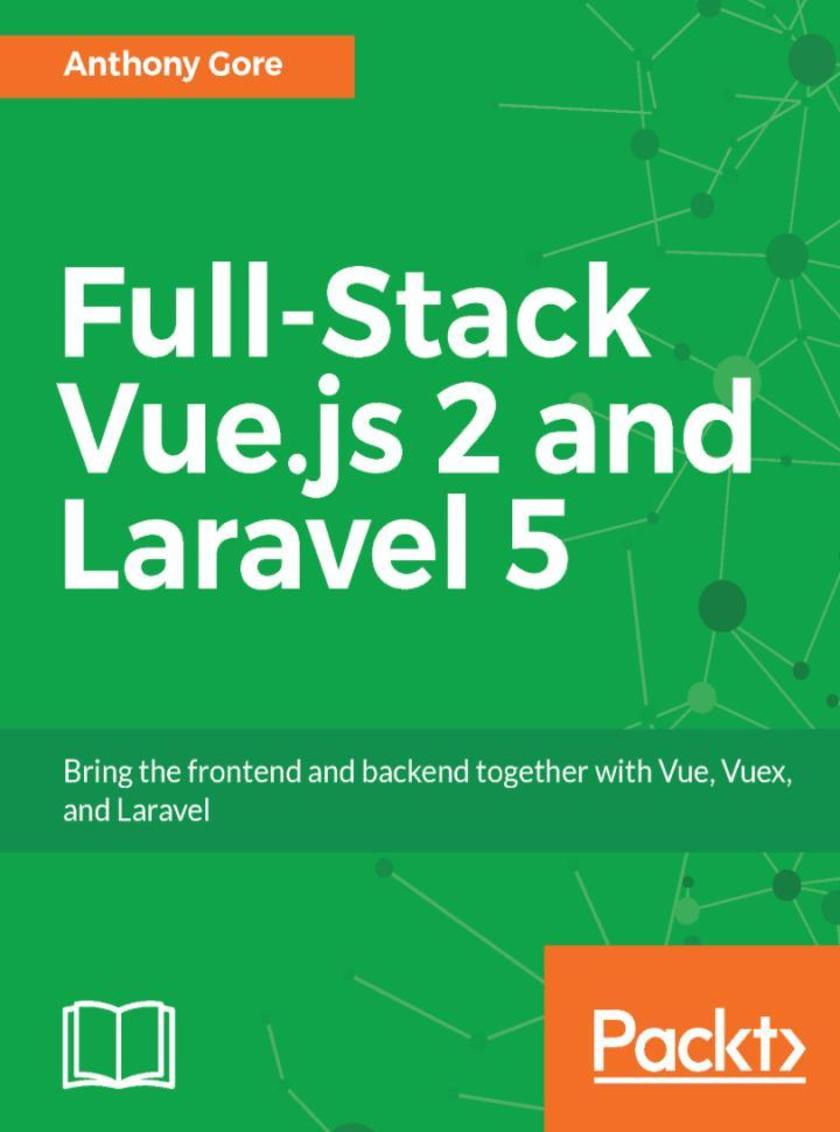
Full-Stack Vue.js 2 and Laravel 5
¥80.65
Learn to build professional full-stack web apps with Vue.js and Laravel About This Book ? End-to-end guide on full-stack development with Vue.js 2 and Laravel 5 ? Developing modern user interfaces with a reusable component-based architecture ? Use Webpack to improve applications performance and development workflow ? Explore the features of Vuex to build applications that are powerful, consistent, and maintainable Who This Book Is For This book targets developers who are new to Vue.js, Laravel, or both, and are seeking a practical, best-practice approach to development with these technologies. They must have some knowledge of HTML, CSS and Java*. What You Will Learn ? Core features of Vue.js to create sophisticated user interfaces ? Build a secure backend API with Laravel ? Learn a state-of-the-art web development workflow with Webpack ? Full-stack app design principles and best practices ? Learn to deploy a full-stack app to a cloud server and CDN ? Managing complex application state with Vuex ? Securing a web service with Laravel Passport In Detail Vue is a JavaScript framework that can be used for anything from simple data display to sophisticated front-end applications and Laravel is a PHP framework used for developing fast and secure web-sites. This book gives you practical knowledge of building modern full-stack web apps from scratch using Vue with a Laravel back end. In this book, you will build a room-booking website named "Vuebnb". This project will show you the core features of Vue, Laravel and other state-of-the-art web development tools and techniques. The book begins with a thorough introduction to Vue.js and its core concepts like data binding, directives and computed properties, with each concept being explained first, then put into practice in the case-study project. You will then use Laravel to set up a web service and integrate the front end into a full-stack app. You will be shown a best-practice development workflow using tools like Webpack and Laravel Mix. With the basics covered, you will learn how sophisticated UI features can be added using ES+ syntax and a component-based architecture. You will use Vue Router to make the app multi-page and Vuex to manage application state. Finally, you will learn how to use Laravel Passport for authenticated AJAX requests between Vue and the API, completing the full-stack architecture. Vuebnb will then be prepared for production and deployed to a free Heroku cloud server. Style and approach Learn front-end Vue techniques, back-end Laravel skills, and put them together to build a working application
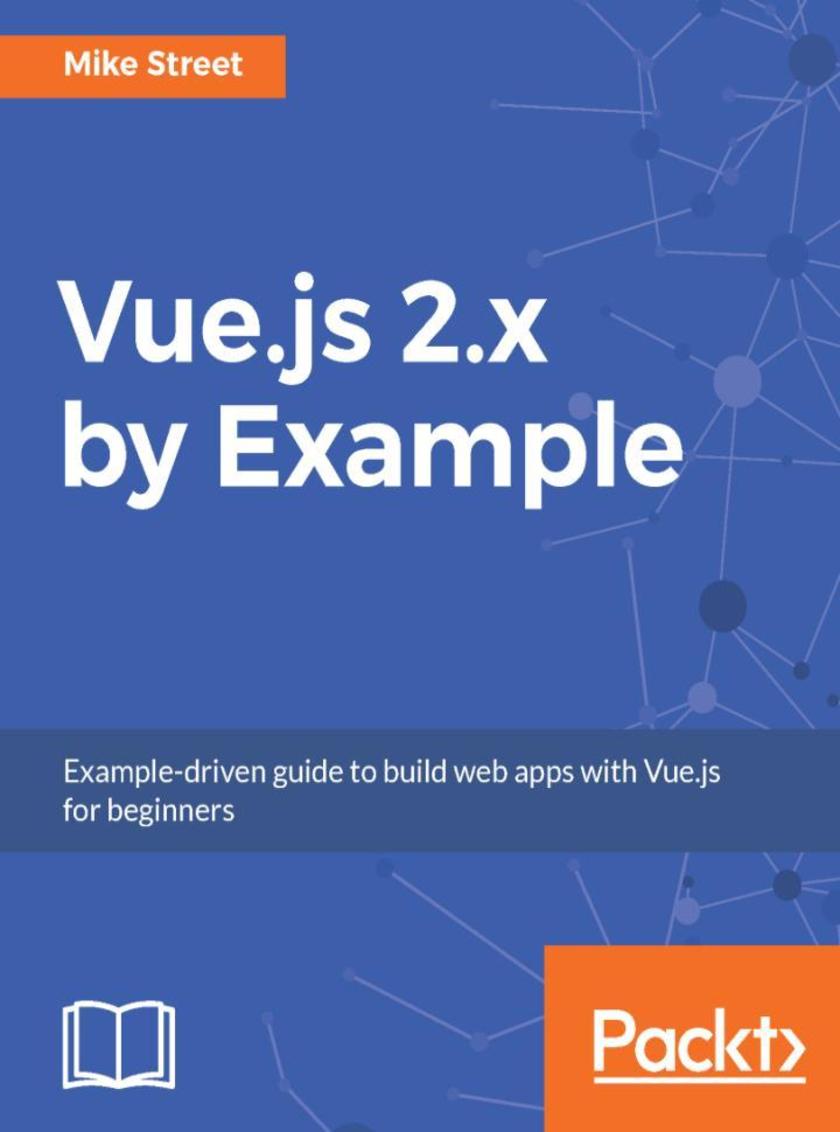
Vue.js 2.x by Example
¥90.46
Learn the fundamentals of vue.js by creating complex SPAs with Vuex, vue-router and more About This Book ? We bridge the gap between "learning" and "doing" by providing real-world examples that will improve your web development skills with Vue.js ? Explore the exciting features of Vue.js 2 through practical and interesting examples ? Explore modern development tools and learn how to utilize them by building applications with Vue.js Who This Book Is For This book is for developers who know the basics of JavaScript and are looking to learn Vue.js with real examples. You should understand the basics of JavaScript functions and variables and be comfortable with using CSS or a CSS framework for styling your projects. What You Will Learn ? Looping through data with Vue.js ? Searching and filtering data ? Using components to display data ? Getting a list of files using the dropbox API ? Navigating through a file tree and loading folders from a URL ? Caching with Vuex ? Pre-caching for faster navigation ? Introducing vue-router and loading components ? Using vue-router dynamic routes to load data ? Using vue-router and Vuex to create an ecommerce store In Detail Vue.js is a frontend web framework which makes it easy to do just about anything, from displaying data up to creating full-blown web apps, and has become a leading tool for web developers. This book puts Vue.js into a real-world context, guiding you through example projects that helps you build Vue.js applications from scratch. With this book, you will learn how to use Vue.js by creating three Single Page web applications. Throughout this book, we will cover the usage of Vue, for building web interfaces, Vuex, an official Vue plugin which makes caching and storing data easier, and Vue-router, a plugin for creating routes and URLs for your application. Starting with a JSON dataset, the first part of the book covers Vue objects and how to utilize each one. This will be covered by exploring different ways of displaying data from a JSON dataset. We will then move on to manipulating the data with filters and search and creating dynamic values. Next, you will see how easy it is to integrate remote data into an application by learning how to use the Dropbox API to display your Dropbox contents in an application In the final section, you will see how to build a product catalog and dynamic shopping cart using the Vue-router, giving you the building blocks of an e-commerce store. Style and approach This book takes you three projects, with step-by-step instructions to help you understand the concepts of Vue and put it into practice.
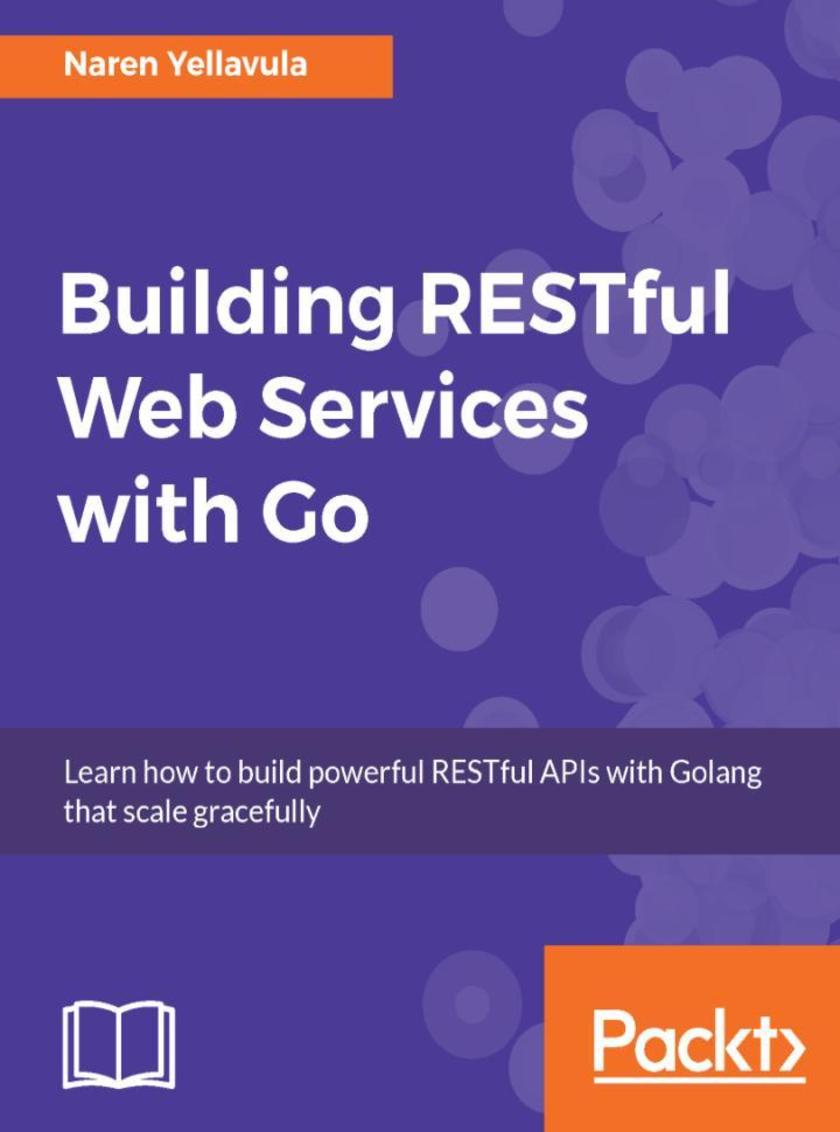
Building RESTful Web services with Go
¥80.65
Explore the necessary concepts of REST API development by building few real world services from scratch. About This Book ? Follow best practices and explore techniques such as clustering and caching to achieve a reactive, scalable web service ? Leverage the Buffalo Framework to quickly implement RESTful endpoints ? Learn to implement a client library for a RESTful web service using Go Who This Book Is For This book is intended for those who want to learn to build RESTful web services with a framework like Buffalo. To make best use of the code samples included in the book, you should have a basic knowledge of Go programming. What You Will Learn ? Create HTTP handler and introspect the Gorilla Mux router ? OAuth 2 implementation with Go ? Build RESTFul API with go-restful, Revel.Go and Buffalo Go ? Create REST API with MongoDB and Go ? Build a working client library and unit test for REST API ? Debug, test, and profile RESTful APIs with each of the frameworks ? Optimize and scale REST API using microservices In Detail REST is an architectural style that tackles the challenges of building scalable web services and in today's connected world, APIs have taken a central role on the web. APIs provide the fabric through which systems interact, and REST has become synonymous with APIs. The depth, breadth, and ease of use of Go, makes it a breeze for developers to work with it to build robust Web APIs. This book takes you through the design of RESTful web services and leverages a framework like Buffalo Go to implement these services. The book starts with a brief introduction to REST API development and how it transformed the modern web. You will learn how to handle routing and authentication of web services along with working with middleware for internal service. The book explains how to use Go frameworks to build RESTful web services and work with MongoDB to create REST API. You will learn how to integrate Postgres SQL and JSON with a Go web service and build a client library in Go for consuming REST API. You will learn how to scale APIs using the microservice architecture and deploy the REST APIs using Nginx as a proxy server. Finally you will learn how to metricize a REST API using an API Gateway. By the end of the book you will be proficient in building RESTful APIs in Go. Style and approach This book is a step-by-step, hands-on guide to designing and building RESTful web services.
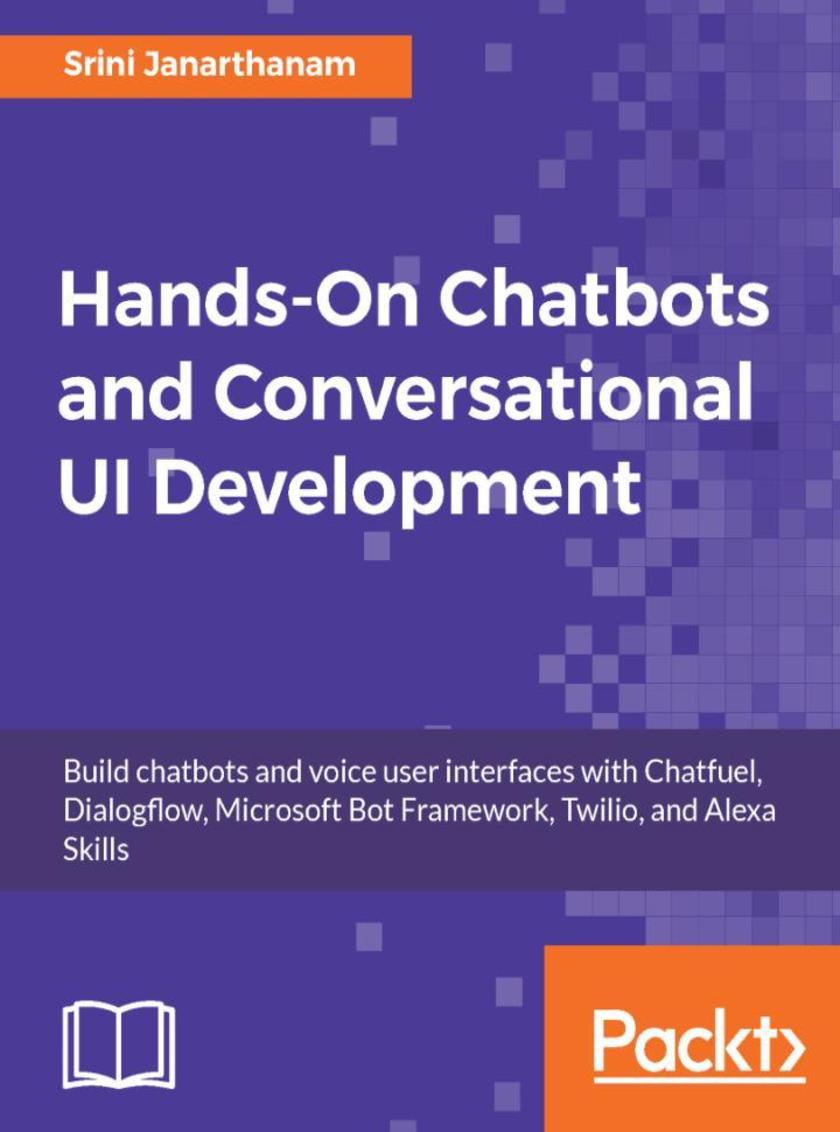
Hands-On Chatbots and Conversational UI Development
¥71.93
Build over 8 chatbots and conversational user interfaces with leading tools such as Chatfuel, Dialogflow, Microsoft Bot Framework, Twilio, Alexa Skills, and Google Actions and deploying them on channels like Facebook Messenge, Amazon Alexa and Google Home About This Book ? Understand the different use cases of Conversational UIs with this project-based guide ? Build feature-rich Chatbots and deploy them on multiple platforms ? Get real-world examples of voice-enabled UIs for personal and home assistance Who This Book Is For This book is for developers who are interested in creating interactive conversational UIs/Chatbots. A basic understanding of JavaScript and web APIs is required. What You Will Learn ? Design the flow of conversation between the user and the chatbot ? Create Task model chatbots for implementing tasks such as ordering food ? Get new toolkits and services in the chatbot ecosystem ? Integrate third-party information APIs to build interesting chatbots ? Find out how to deploy chatbots on messaging platforms ? Build a chatbot using MS Bot Framework ? See how to tweet, listen to tweets, and respond using a chatbot on Twitter ? Publish chatbots on Google Assistant and Amazon Alexa In Detail Conversation as an interface is the best way for machines to interact with us using the universally accepted human tool that is language. Chatbots and voice user interfaces are two flavors of conversational UIs. Chatbots are real-time, data-driven answer engines that talk in natural language and are context-aware. Voice user interfaces are driven by voice and can understand and respond to users using speech. This book covers both types of conversational UIs by leveraging APIs from multiple platforms. We'll take a project-based approach to understand how these UIs are built and the best use cases for deploying them. We'll start by building a simple messaging bot from the Facebook Messenger API to understand the basics of bot building. Then we move on to creating a Task model that can perform complex tasks such as ordering and planning events with the newly-acquired-by-Google Dialogflow and Microsoft Bot framework. We then turn to voice-enabled UIs that are capable of interacting with users using speech with Amazon Alexa and Google Home. By the end of the book, you will have created your own line of chatbots and voice UIs for multiple leading platforms. Style and approach This is a practical book, where each chapter focuses on a chatbot project. The chapters take a step-by-step approach to help you build intelligent chatbots that act as personal assistants.
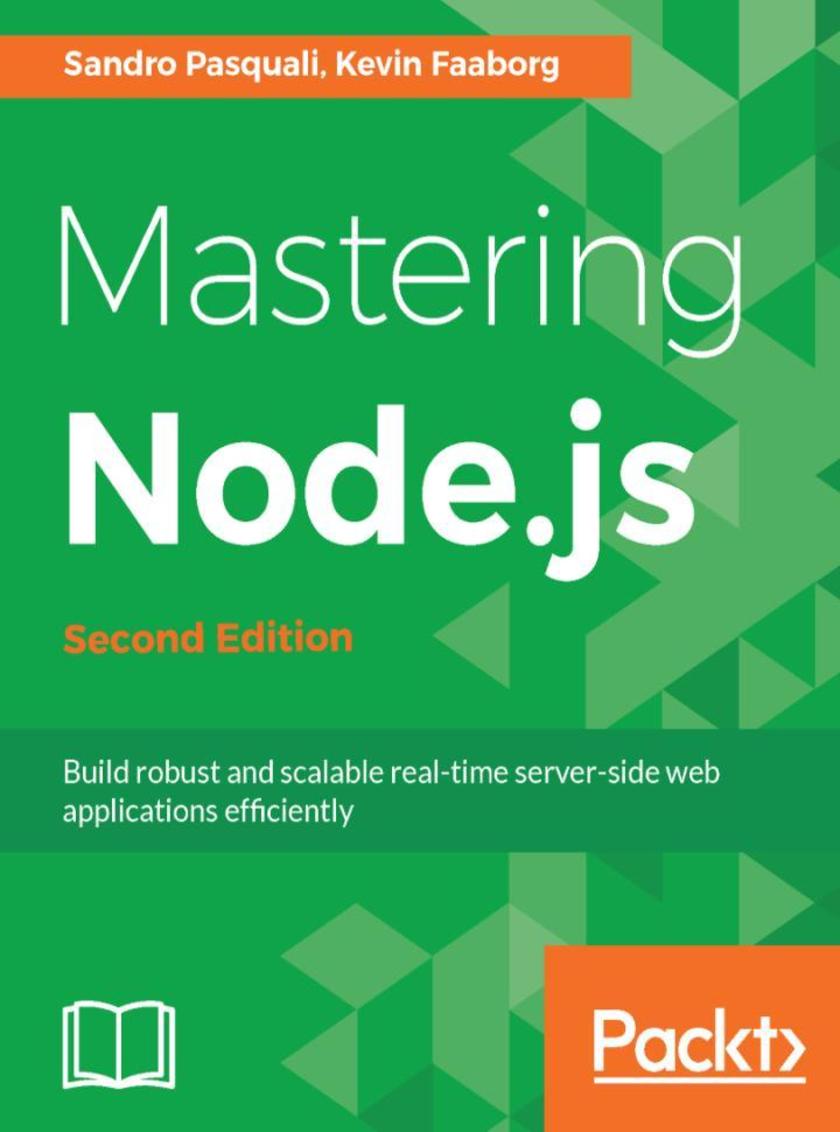
Mastering Node.js - Second Edition
¥90.46
Expert techniques for building fast servers and scalable, real-time network applications with minimal effort; rewritten for Node.js 8 and Node.js 9 About This Book ? Packed with practical examples and explanations, Mastering Node.js contains everything you need to take your applications to the next level. ? Unleash the full potential of Node.js 9 to build real-time and scalable applications. ? Gain in-depth knowledge of asynchronous programming, event loops, and parallel data processing. ? Explore Node's innovative event-non-blocking design, and build professional applications with the help of detailed examples. Who This Book Is For This book is targeted at JavaScript developers who want to take an in-depth look at the latest Node.js framework to create faster, scalable, real-time backend applications. Basic JavaScript programming knowledge—and also some previous Node.js development experience—are mandatory to get the best out of this book What You Will Learn ? Build an Electron desktop app using Node that manages a filesystem ? Explore Streams and understand how they apply to building networked services ? Develop and deploy an SMS-driven customer service application ? Use WebSockets for rapid bi-directional communication ? Construct serverless applications with Amazon Lambda ? Test and debug with headless browsers, CPU profiling, Mocha, Sinon, and more ? Scale applications vertically and horizontally across multiple cores and web services In Detail Node.js, a modern development environment that enables developers to write server- and client-side code with JavaScript, thus becoming a popular choice among developers. This book covers the features of Node that are especially helpful to developers creating highly concurrent real-time applications. It takes you on a tour of Node's innovative event non-blocking design, showing you how to build professional applications. This edition has been updated to cover the latest features of Node 9 and ES6. All code examples and demo applications have been completely rewritten using the latest techniques, introducing Promises, functional programming, async/await, and other cutting-edge patterns for writing JavaScript code. Learn how to use microservices to simplify the design and composition of distributed systems. From building serverless cloud functions to native C++ plugins, from chatbots to massively scalable SMS-driven applications, you'll be prepared for building the next generation of distributed software. By the end of this book, you'll be building better Node applications more quickly, with less code and more power, and know how to run them at scale in production environments. Style and approach Mastering Node.js contains all of the examples and explanations you'll need to build applications in a short amount of time and at a low cost, running rapidly and at scale.
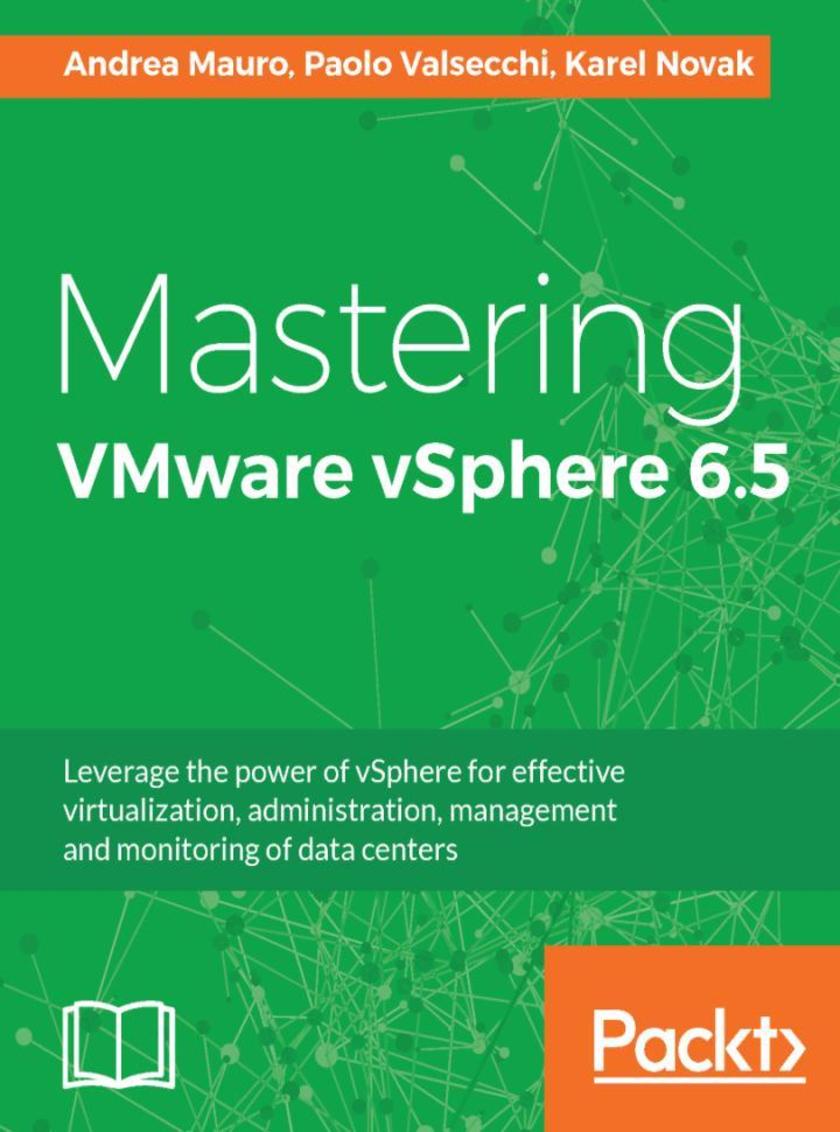
Mastering VMware vSphere 6.5
¥90.46
Deliver great business value by adopting the virtualization platform VMware vSphere 6.5, from the design to the deployment About This Book ? This new edition is based on vSphere 6.5 and has described new features in different areas, including management, security, scalability, availability and so on. ? Design, deploy and manage VMware datacenters ? Implement monitoring and security of VMware workloads with ease. Who This Book Is For If you are an administrator, infrastructure engineer, IT architect, or an IT consultant and analyst who has basic knowledge of VMware vSphere and now wants to master it, then this book is for you. What You Will Learn ? Get a deep understanding of vSphere 6.5 functionalities ? Design and plan a virtualization environment based on vSphere 6.5 ? Manage and administer a vSphere 6.5 environment and resources ? Get tips for the VCP6-DCV and VCIX6-DCV exams (along with use of the vSphere 6 documentation) ? Implement different migration techniques to move your workload across different environments. ? Save your configuration, data and workload from your virtual infrastructure. In Detail VMware vSphere 6.5 provides a powerful, flexible and secure foundation for next-generation applications which helps you create an effective digital transformation. This book will be based on VMware vSphere 6.5 which empowers you to virtualize any complex application with ease. You’ll begin by getting an overview of all the products, solutions and features of the vSphere 6.5 suite, comparing the evolutions with the previous releases. Next ,you’ll design and plan a virtualization infrastructure to drive planning and performance analysis. Following this , you will be proceeding with workflow and installation of components. New network trends are also covered which will help you in optimally designing the vSphere environment. You will also learn the practices and procedures involved in configuring and managing virtual machines in a vSphere infrastructure. With vSphere 6.5, you’ll make use of significantly more powerful capabilities for patching, upgrading, and managing the configuration of the virtual environment. Next we’ll focus on specific availability and resiliency solutions in vSphere. Towards the end of the book you will get information on how to save your configuration, data and workload from your virtual infrastructure. By the end of the book you’ll learn about VMware vSphere 6.5 right from design to deployment and management. Style and Approach This book acts as a reference guide providing real-world scenarios and a possible baseline for each virtualization project based on VMware vSphere.




 购物车
购物车 个人中心
个人中心



